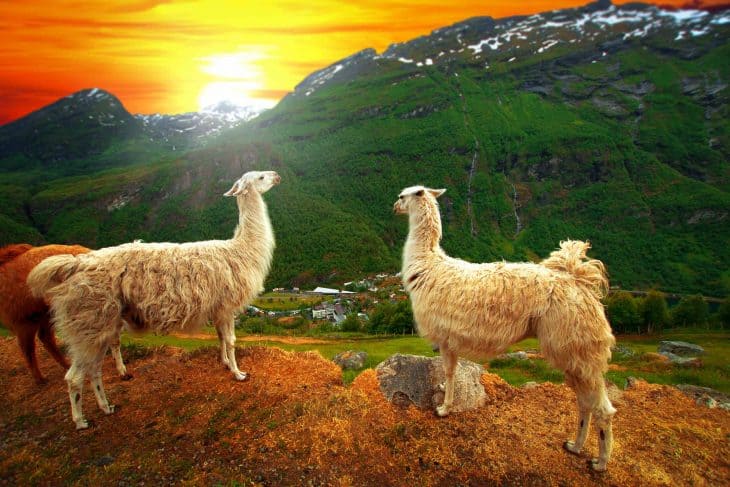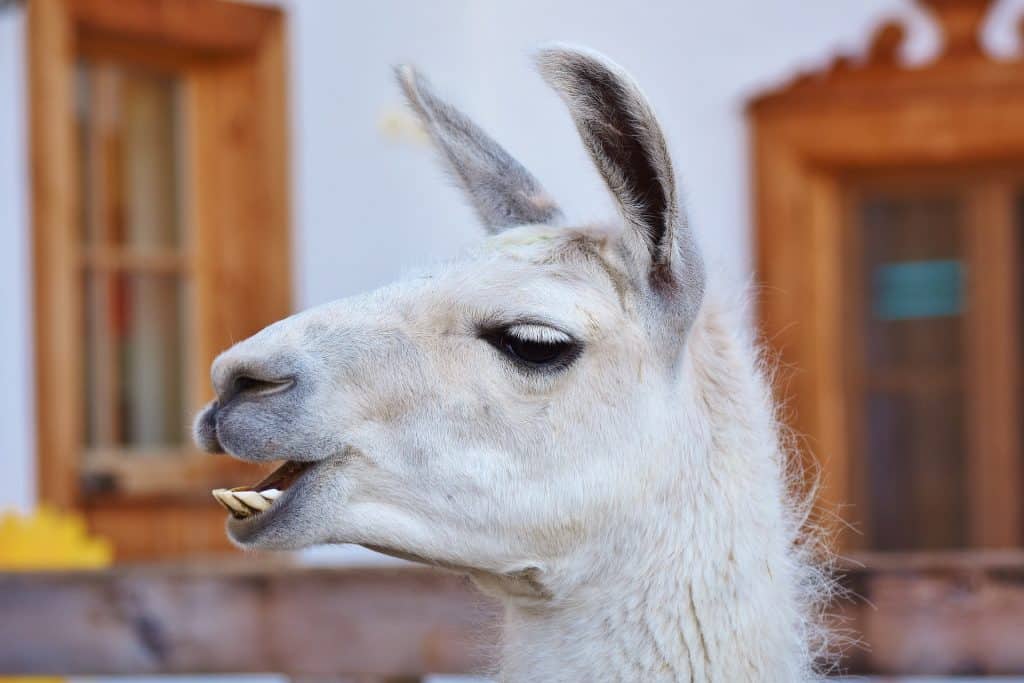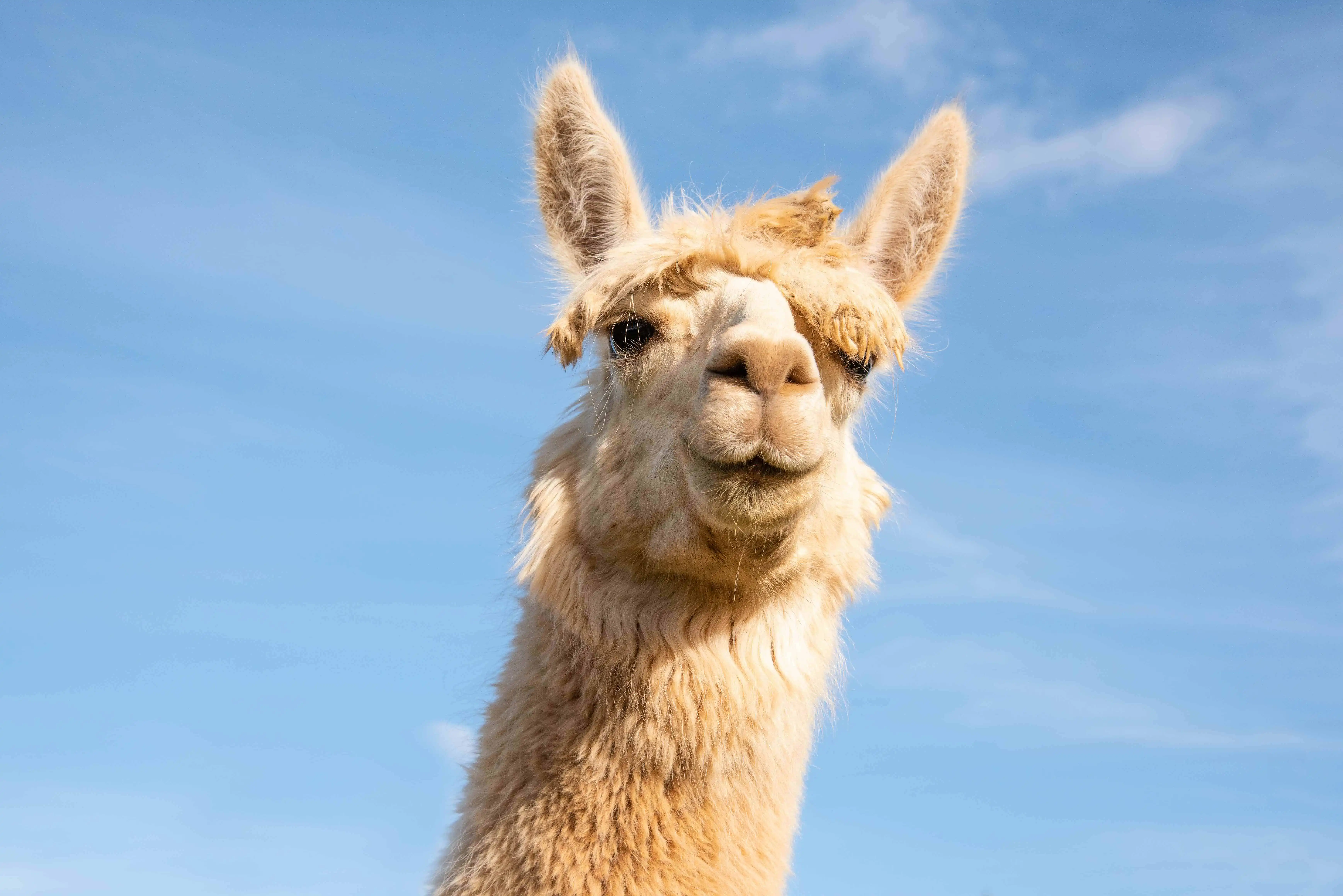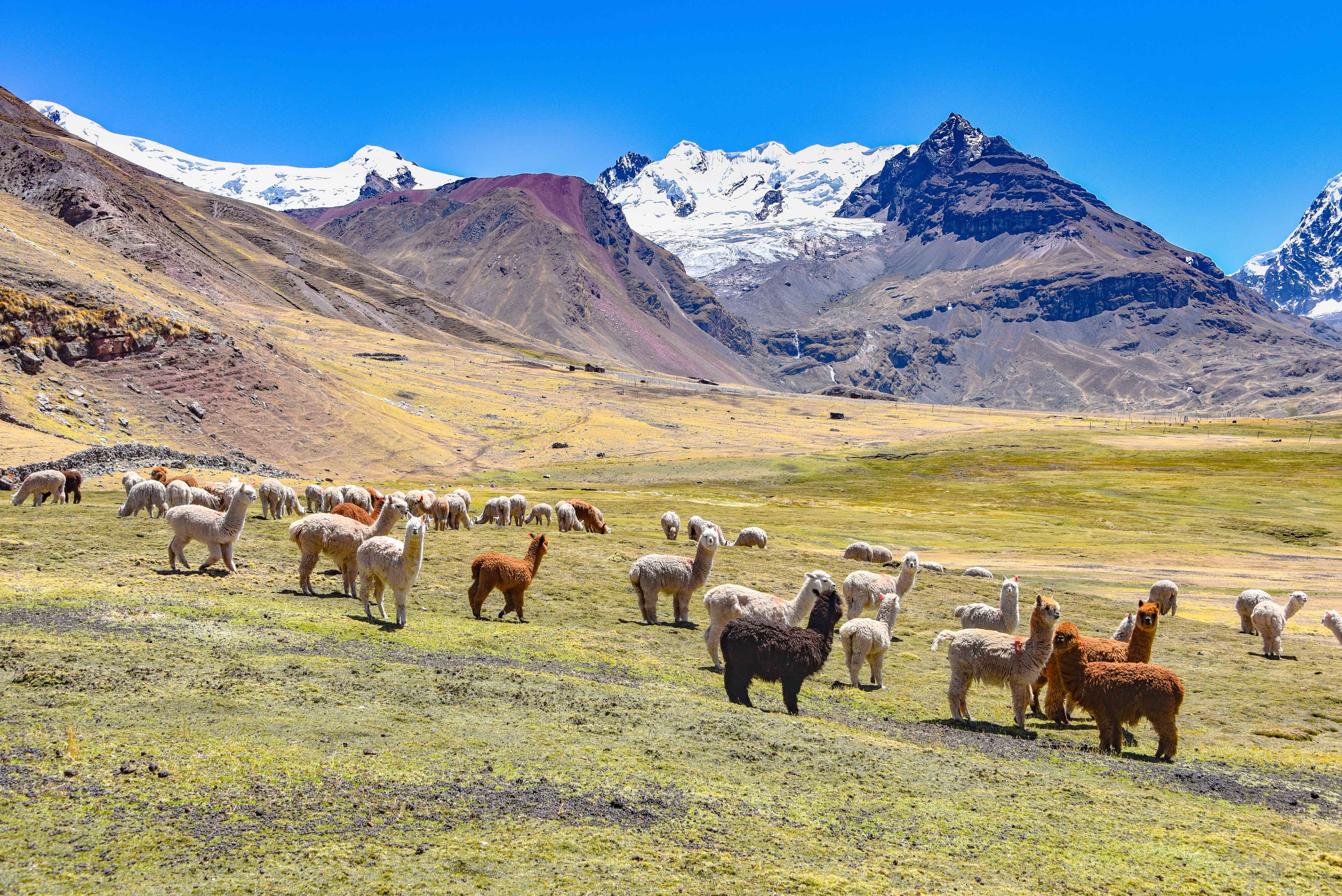
We won’t blame you if you hope to discover the answer behind many llama vs alpaca disputes online. The two animals, after all, have many similarities that could cause some confusion. First, both come from the family Camelidae and look identical when seen from afar. Some may advise you to watch the animated film The Emperor’s New Groove to put your mind at ease. Despite being animated, the illustrators took care in designing the emperor-turned-llama. Putting the unrealistic colors aside, the film’s llama features all the unique details seen in the mammal’s real-life counterpart. However, we understand if you still find it hard to spot the contrast between the two. In truth, most people often struggle to tell them apart in pictures and real life. Additionally, the fact that both alpacas and llamas pop up in the same areas in South America further complicated this plight.
To settle it once and for all, we came up with a list of features of the two animals. Using these specific details, you can finally tell the two animals apart without second-guessing. Never be fooled with future “Guess the Animal” quizzes online ever again by resolving the llama vs alpaca argument today!
Llama vs Alpaca: Spit Battle
Before focusing on the differences between alpacas and llamas, let’s look into one of the main causes of confusion. Like most known members of the camel family, alpacas and llamas spit from time to time. Yes, the act of spitting serves as a similar action between the two. However, a key difference lies in the contents of a certain mammal’s “spit.”
You don’t need to panic if an alpaca spits on you. They usually do this when in distress or upset which you can excuse as the animal likely sees you as a threat. Unfortunately, that’s not the case if you’re the receiving end of a llama’s spit. Similar to alpaca, they spit when stressed or annoyed, but they don’t only expel saliva.
After being spat on, you’ll instantly notice the sticky liquid’s pungent scent. It may not seem like much at first but the harsh stench will make you think otherwise. Luckily, you’ll only stink for the day and not feel any pain. You must know, however, that you will witness a portion of what the llama ate earlier in the day.
Llama vs Alpaca: Physical Appearance
Face
For a llama vs alpaca challenge, check out each animal’s face. With a quick zoom-in, you’ll instantly notice the obvious difference between them. If you compare a llama’s face with a camel’s features, you will understand why. A llama’s face looks like an elongated yet smaller version of a camel’s. You might even mistake them as twins with close-up pictures.

Alpacas develop with hair growing on their faces. The additional fluffiness from the hair makes their faces look sunken. Some might say this detail makes alpacas serve as the camel family’s version of a pug. Like the adorable dogs, alpacas gained fame for having small faces and shorter snouts. Unfortunately, this detail doesn’t provide much help when asked to compare their hairless faces. A clean-shaven alpaca reveals a familiar elongated nose. Once you see it, you may confuse it with a normal llama.

Ears
Aside from the face, one of the easiest ways to settle a llama vs alpaca debate lies on their ears. Some might urge you to look at their ears instead of analyzing their faces. However, this minor detail still confuses most people. To know the exact difference, we suggest using pictures where the mammals are facing toward the camera. Zoom in on the ears and examine how they’re opened.
Upon close inspection, a llama’s ears feature creases that may remind you of banana peels. They appear stretched out with folded top flaps that show the inner ear’s skin. Meanwhile, an alpaca’s ears grow upward with pointed tips akin to that of elves. The sharp flaps also grow bushy hair like most parts of the alpaca’s face. In turn, the llama’s ear grows with wisps of hair that we can’t see from afar.
Size and Weight
The difference between the size and weight of alpacas and llamas is easier to see in person. If you’re tasked to analyze them, we advise you to take caution. It may not seem obvious at first but llamas grow bigger than alpacas. When it comes to their height, llamas grow a foot taller than the usual alpaca. The crude mammals stand tall with an average height of 4 feet. Meanwhile, their bashful counterparts grow with petite bodies that reach a height of about 3 feet tall.

After knowing their respective heights, you probably guessed which of the two mammals weighs more. Alpacas may seem heavier with their fluffy fleece but they only weigh 55 and 65 kg or 121 to 150 pounds. On the other hand, llamas gain more weight because of their taller size. Considered as the largest lamoid, llamas usually weigh up to 113 kg or 250 pounds.
Body Shape
After knowing their size and weight, we urge you to take note of the physical differences between llamas and alpacas. When shorn, they may resemble each other a lot, but we mostly encounter them with their fluffy fur. To elaborate on their distinct body shape, you must first visualize their overall similarity. As part of the family Camelidae, their backs develop the same shape we see from camels without the usual humps. With that in mind, you must distinguish which one displays a curvier or flat back. Remember to pay close attention to the details of their butts or backside.
Despite their overall similarity from afar, llamas and alpacas develop unique backs and tails. If you watched The Emperor’s New Groove, you might notice the flat back and short furry tail of llamas. Real-life llamas grow the same bushy tails that wag while they graze for food. On the other hand, alpacas grow with curved backs that resemble a camel’s humped back. The curve appears more evident after you sheer off their fur. They also develop tails that tuck down their butts.
Hair Texture of Coat or Fleece
Another easy tip for winning a llama vs alpaca challenge is to analyze each mammal’s fleece. Farmers who raise them usually shave off their fleece to craft fabric that combats the cold weather. This proves useful to people who live in high-altitude areas where the cold season offers freezing climate indexes. If you own one or both types of fleece, you probably noticed the distinct details that make each fiber unique. Despite the obvious differences, the fleece from alpacas and llamas provides the warmth and comfort you need during cold seasons.

If you base it on appearances, the fleece from llamas are silkier than the ones shaved from alpacas. For a more elaborate description, you must find a way to touch each type of fleece for yourself. After getting a feel of the wool, you might notice the familiar texture of a llama’s hair. When we say hair, we mean actual hair. People who touched a llama’s fleece can recall the texture of soft yet dry hair. Alpacas, on the other hand, grow a softer fleece that reminds you of cotton. Because of this, some people who raise these fluffy mammals use the shorn fleece to stuff pillows or cushions.
Llama vs Alpaca: Behavior
When you encounter alpacas and llamas in real life, you will notice a small gap in their behavior toward us humans. Both types of mammals grew up in herds and are accustomed only to their kin. When encountering other animals or people, alpacas become shy while llamas will show crude and aloof behavior. To understand an alpaca’s docile nature, you may compare your experience of moving to a new neighborhood. Like most of us, alpacas become meek as they get used to their surroundings. Because of this quality, some people who own ranches in the USA end up buying one or more alpacas. If you’re interested in raising one, you must mind the effects of your area’s weather to keep your alpacas comfortable.
Much like Emperor Kuzco from The Emperor’s New Groove, llamas gained notoriety for being proud and rude. Despite growing in herds, these lamoids usually fend for themselves without depending on members of their pack. Due to their independent lifestyle, most llamas have a bad temperament toward anything unfamiliar to them. They also built up a defense mechanism that some farmers use to protect alpaca herds. Those who raise both members of the camel family know that llamas don’t hesitate in saving a group of alpacas.
Trekking
If you’ve traveled to Machu Picchu, you probably know that the best way to reach the historical site is by riding a llama. When you visit the high-altitude areas of South America, you’ll most likely encounter one or two alpacas and llamas traveling together. Once you spot them, expect to see people mounted on the backs of llamas and not alpacas. Those bashful camel cousins are only bred for their soft fur. You do not ride an alpaca’s back no matter how light you weigh.

Llama vs Alpaca: Origin
One of the causes of the llama vs alpaca debate comes from their places of origin. Yes, both species are raised in different countries in South America. Their exact origins, however, sparked several debates between animal experts due to their similar characteristics. Thanks to genetic studies, we can finally say that the two camel family members have different ancestors. Around 6,500 years ago, llamas came to be after attempts of domesticating guanacos. You may spot the llama’s wild counterpart in high-altitude areas around Peru and Bolivia.
On the other hand, the alpacas we know feature a history of domestication tracing about 6,000 to 7,000 years ago. Vicuñas residing in the Andes Mountains were bred to domestication and transformed into the fluffy alpacas we have today. When you look at the two lamoids from afar, you might not notice their relation with each other. The vicuña’s long and soft coat stands out from an alpaca’s fluffy fleece.
Llama vs Alpaca: Purpose and Upbringing
The behavior we see from alpacas and llamas comes from domestication. People back then cultivated these mammals while living in mostly high-altitude areas in South America. Doing so helped families and communities to live comfortably amid the cold nights and warm mornings. The domesticated nature of alpacas and llamas sounds the same to us city folk. Despite the possible similarities, the two members of the camel family were raised for completely different reasons, thousands of years ago.
Nowadays, we usually associate alpacas and llamas with their unique fur that we often see sold as clothing or linen. Initially, people who raised them used their fleece for distinct crafts. The hair shorn from llamas were used in weaving artistic craft. They mainly used the tall lamoids for transport and carrying wares. Meanwhile, the fleece from alpacas was mainly used for clothing and blankets to keep warm during sleep or evening treks.
Was this page helpful?
Our commitment to delivering trustworthy and engaging content is at the heart of what we do. Each fact on our site is contributed by real users like you, bringing a wealth of diverse insights and information. To ensure the highest standards of accuracy and reliability, our dedicated editors meticulously review each submission. This process guarantees that the facts we share are not only fascinating but also credible. Trust in our commitment to quality and authenticity as you explore and learn with us.


